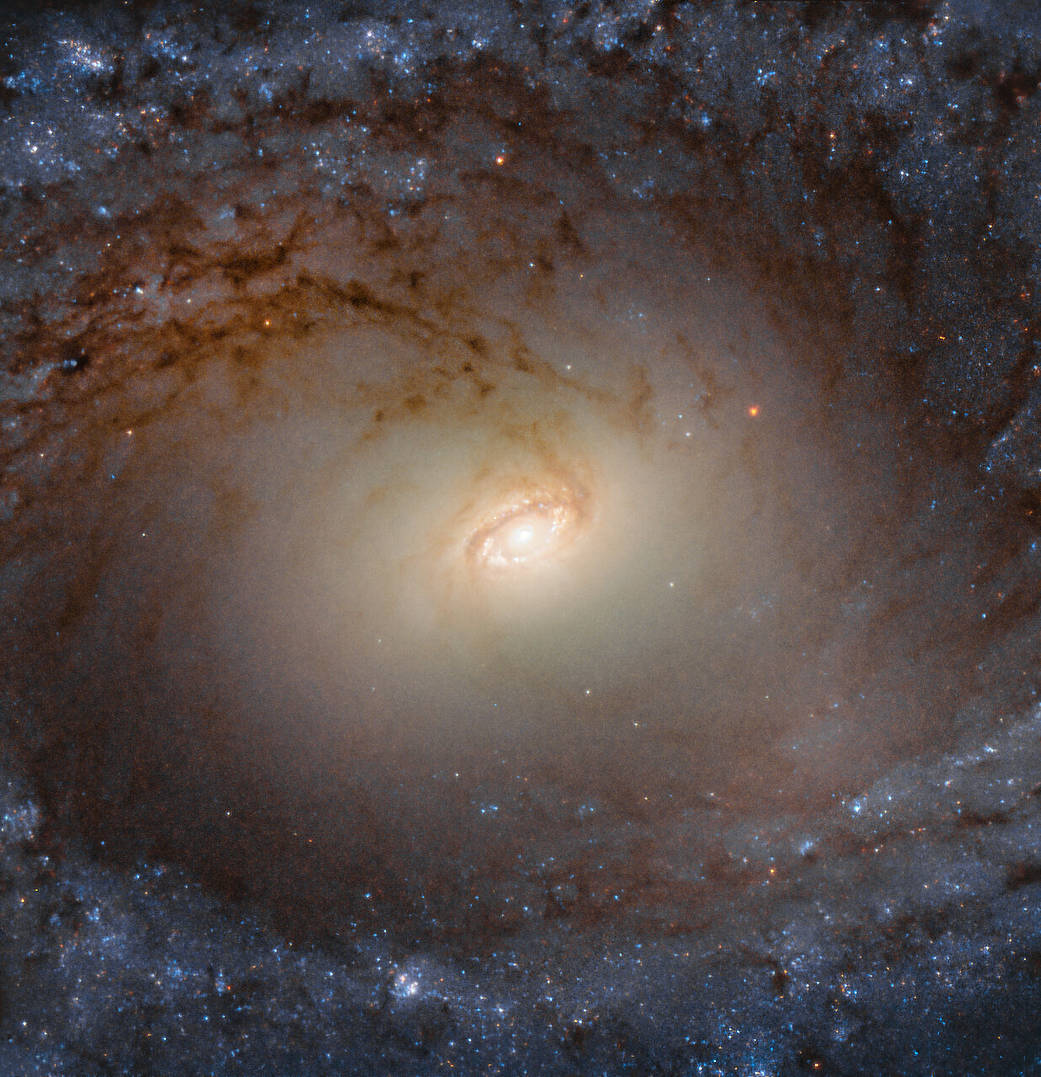This image from the NASA/ESA Hubble Space Telescope shows IC 2051, a galaxy in the southern constellation of Mensa (the Table Mountain) lying about 85 million light-years away. It is a spiral galaxy, as evidenced by its characteristic whirling, pinwheeling arms, and it has a bar of stars slicing through its center.
This galaxy was observed for a Hubble study on galactic bulges, the bright round central regions of spiral galaxies. Spiral galaxies like IC 2051 are shaped a bit like flying saucers when seen from the side; they comprise a thin, flat disk, with a bulky bulge of stars in the center that extends above and below the disk. These bulges are thought to play a key role in how galaxies evolve, and to influence the growth of the supermassive black holes lurking at the centers of most spirals. While more observations are needed in this area, studies suggest that some, or even most, galactic bulges may be complex composite structures rather than simple ones, with a mix of spherical, disk-like, or boxy components, potentially leading to a wide array of bulge morphologies in the universe.
This image comprises data from Hubble’s Wide Field Camera 3 at visible and infrared wavelengths.
Text credit: ESA (European Space Agency)
Image credit: ESA/Hubble & NASA, P. Erwin et al.
这张由NASA/ESA哈勃太空望远镜拍摄的图片显示了IC 2051,一个位于门萨南部星座(桌山)的星系,距离我们约8500万光年。它是一个螺旋星系,它特有的旋转、旋臂证明了这一点,它的中心有一条恒星带。
这个星系是哈勃研究星系隆起时观察到的,星系隆起是螺旋星系明亮的中心区域。从侧面看,像IC 2051这样的螺旋星系形状有点像飞碟;它们由一个又薄又平的圆盘组成,它的中心有一个巨大的隆起,从圆盘的上方和下方延伸开来。这些隆起被认为在星系的演化过程中起着关键作用,并影响着潜伏在大多数螺旋星系中心的超大质量黑洞的成长。虽然在这一领域还需要更多的观察,但研究表明,一些甚至大多数星系隆起可能是复杂的复合结构,而不是简单的结构,它们混合着球形、盘状或四四方方的结构,可能会导致宇宙中出现各种各样的隆起形态。
这幅图像是由哈勃的广域相机3号在可见光和红外波段的数据组成的。
文字来源: ESA (European Space Agency)
影像来源: ESA/Hubble & NASA, P. Erwin et al.







